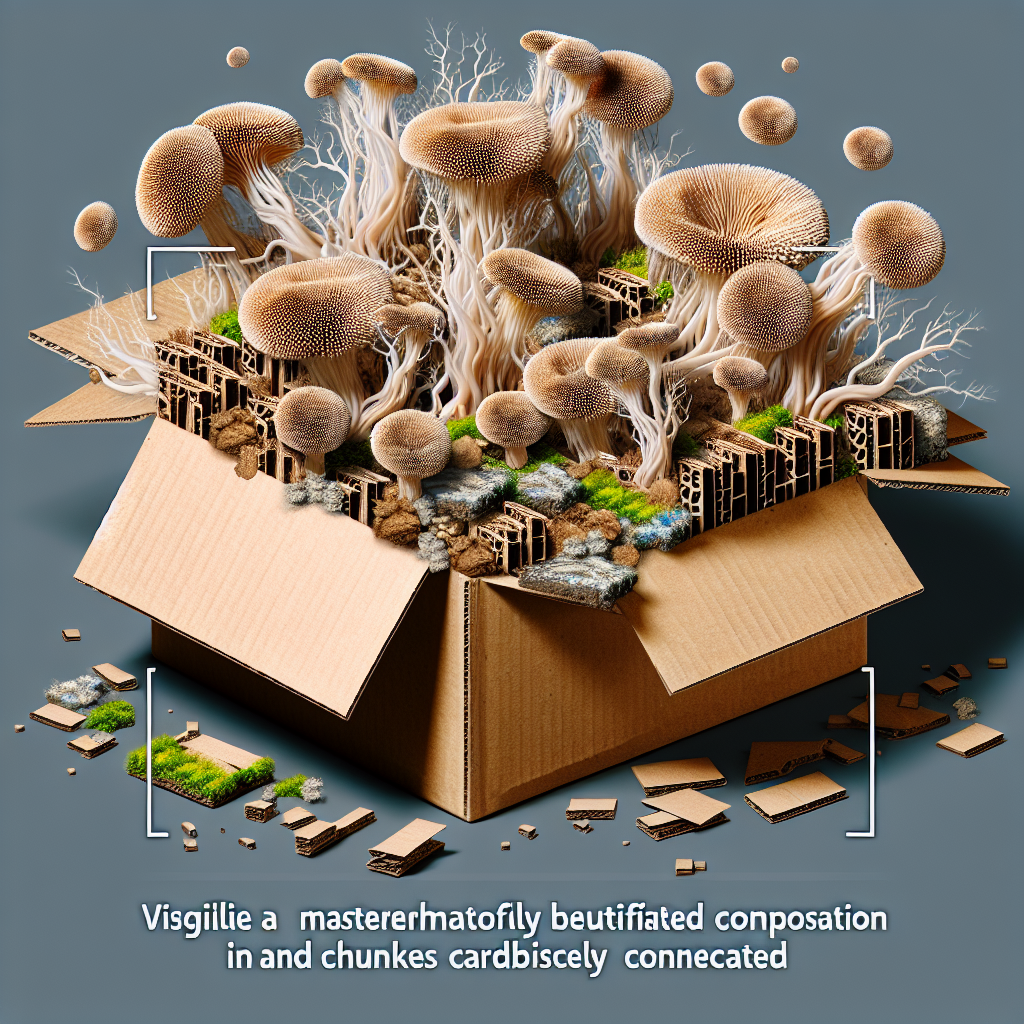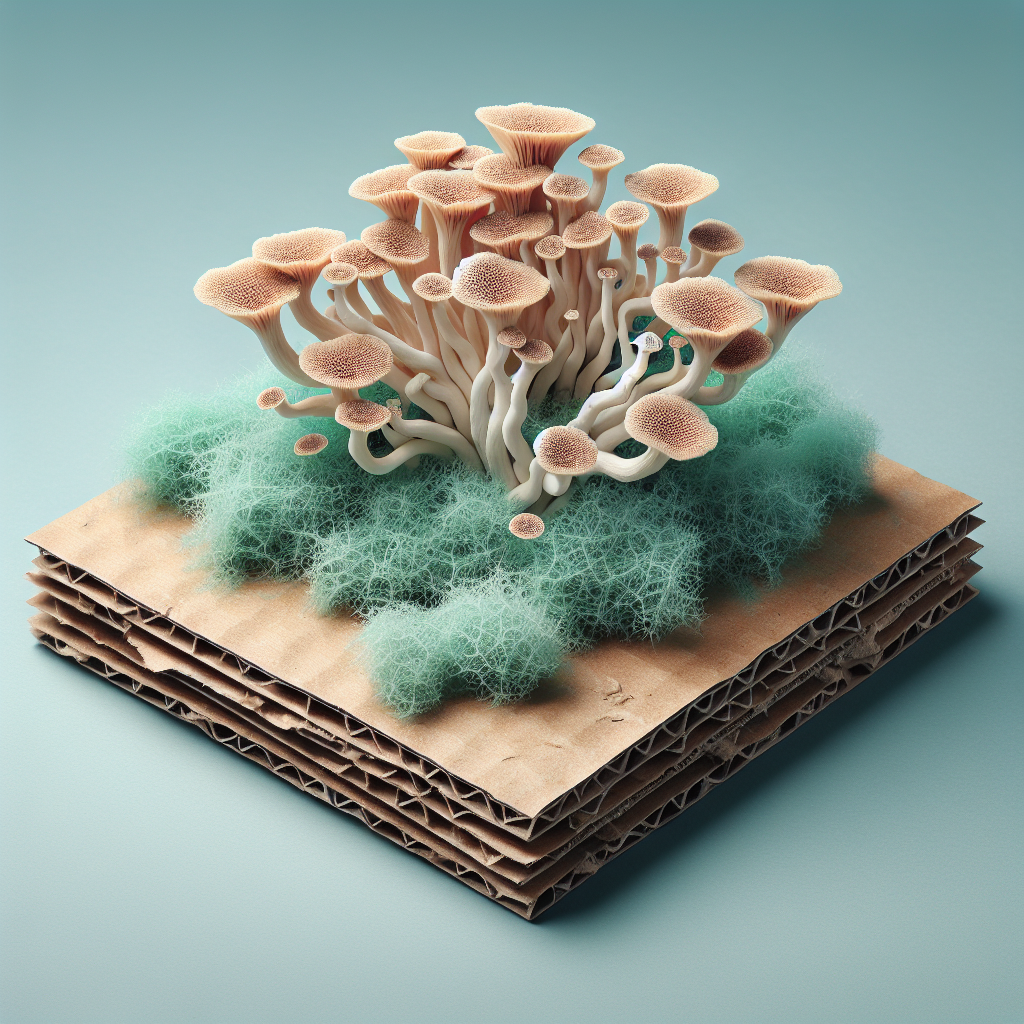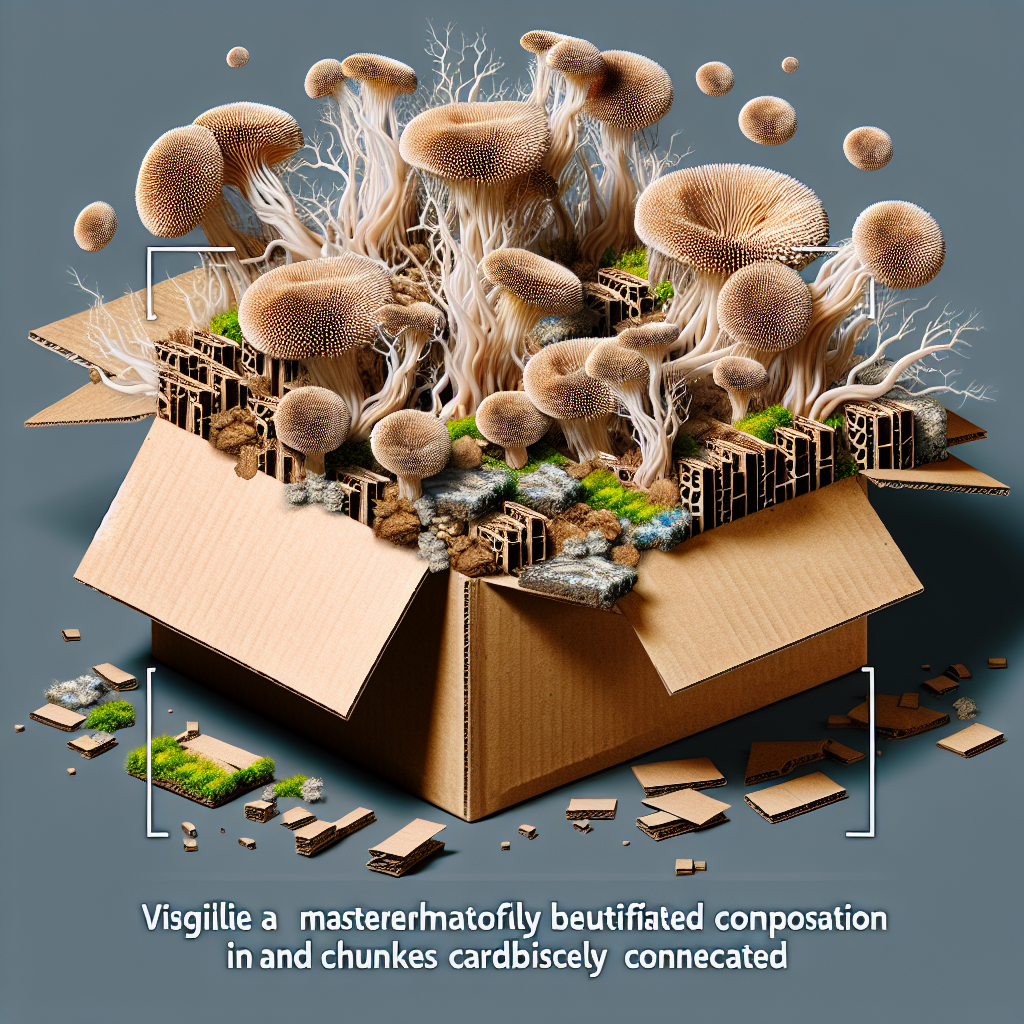In the pursuit of environmental sustainability, the innovative application of mycelium – the network of fungi filaments – in the creation of cardboard, presents a groundbreaking approach. “Mycelium Cardboard: A Sustainable Solution” escorts you through the process of how mycelium is harnessed towards crafting sturdy, biodegradable, and eco-friendly cardboard. This riveting journey offers unrivaled insights into the transformative potential of mycelium cardboard, a vital player within the landscape of renewable materials. By exploring this article, you gain an understanding of the benefits and the immense potential this sustainable method embodies and how it can aid in fostering a biologically grounded future.

Understanding Mycelium
Definition of Mycelium
Mycelium is the vegetative part of fungi, composed of a network of hyphae – filamentous structures – that work together to absorb nutrients from its surroundings. These hyphae can be microscopic yet, when massed together, create a visible, web-like structure known as mycelium.
Growth and Characteristics of Mycelium
Mycelium displays a unique growth pattern, outward in every direction, to maximize resource absorption. This network of mycelial threads can span large areas of soil and, amazingly, every hypha within this network is capable of nutrient absorption. Mycelium exhibits resilience to harsh environmental conditions, contributing to its value in various applications.
Role of Mycelium in the Ecosystem
Mycelium plays a vital role in ecosystems, especially in soil health management. It improves soil structure, enhances nutrient and water availability, and promotes plant growth. Additionally, it aids in decomposition and recycling of organic materials, further adding to the nutrient cycle. Its role as a primary decomposer places it at the heart of ecosystems around the world.
Exploration of Cardboard
Brief History of Cardboard
The history of cardboard dates back to ancient Egypt, where it was used for various functional and decorative purposes. However, the popularity of cardboard escalated in the 19th century with the advent of industrial manufacturing. Since then, it has become a widely-used packaging material globally due to its low cost, versatility, and convenience.
Common Uses of Cardboard
Cardboard, primarily used for packaging purposes, frames diverse applications spanning numerous industries. It serves as a primary material for boxes, cartons, displays, and even in the design and construction of furniture and buildings. Its flexibility, strength, and lightweight properties make it universally applicable.
Issues with Traditional Cardboard
While traditional cardboard is prevalent, it poses significant environmental challenges. The production process, which involves deforesting, bleaching, and the usage of unsustainable binders, contributes considerably to environmental degradation. Moreover, the recycling process of cardboard is high energy-consuming and also quite wasteful, creating a need for a more sustainable alternative.
Merging Mycelium and Cardboard
The Concept of Mycelium Cardboard
The idea of mycelium cardboard revolutionizes the packaging industry. It is an organic and eco-friendly material, integrating the natural resources of mycelium and various waste materials like cardboard. The mycelium acts as a natural binder, replacing the need for environmentally harmful adhesives.
The Innovative Process of Making Mycelium Cardboard
The process of fabricating mycelium cardboard is simple and innovative. It involves mixing mycelium spores with waste materials and allowing them to grow in a mold. Over time, the mycelium acts as a binder, growing and forming a solid mass with the provided substrates. After a determined period, the resultant composite is heat-treated to halt mycelium growth, yielding the final product.
Unique Properties of Mycelium Cardboard
Mycelium cardboard boasts exceptional attributes, such as biodegradability, versatility, and robustness. It’s an excellent thermal and acoustic insulator and can even exhibit fire-resistant properties. Moreover, its biodegradability eliminates issues related to disposal, making it a viable replacement for traditional materials.

Environmental Impact of Mycelium Cardboard
Reduced Carbon Footprint
Mycelium cardboard significantly reduces carbon footprint as the mycelium absorbs carbon dioxide during growth. Besides, it requires less energy to produce compared to traditional cardboard, leading to lower greenhouse emissions.
Biodegradability of Mycelium Cardboard
One of the standout advantages of mycelium cardboard is its biodegradability. Unlike conventional cardboard and packaging materials that contribute to landfill issues, mycelium cardboard can be composted, offering a sustainable disposal solution that benefits the environment.
Energy Efficiency in Production
The production process of mycelium cardboard requires minimal energy and water, making it highly energy-efficient. Additionally, the process doesn’t involve harmful chemicals, reducing environmental pollution.
Comparison of Mycelium Cardboard and Traditional Cardboard
Durability Comparison
Mycelium cardboard matches, if not surpasses, the durability of traditional cardboard. It withstands force and damage with superior resilience – ensuring its application viability in a broad range of industries, from packaging to construction.
Cost Analysis
The cost of producing mycelium cardboard is currently higher than traditional cardboard due to a relatively lower manufacturing scale. However, as more manufacturers adopt its use, and production becomes more streamlined, the cost is projected to decrease overall.
Environmental Impact Comparison
mycelium cardboard clearly trumps traditional cardboard concerning environmental impact. Its production is not detrimental to the environment, and its disposal doesn’t contribute to landfill issues – promising a more sustainable future for the packaging industry and beyond.
Applications of Mycelium Cardboard
Packaging Industry
The packaging industry can greatly benefit from the use of mycelium cardboard due to its biodegradability, strength, and thermal insulation properties. It’s especially suitable for packaging electronics, apparel, and perishable foods.
Building and Construction
In the construction industry, mycelium cardboard could be used for insulation, acoustic panels, and even structural components, thanks to its strength, lightness, and fire resistance.
Art and Design
The versatile nature of mycelium cardboard affords room for artistic expressions in fields like fashion, interior decor, furniture design, and more, becoming a prime choice for environmentally-conscious artisans.
The Future of Mycelium Cardboard
Projected Market Growth
The market for mycelium-based products, including cardboard, is expected to have strong growth in the coming years, thanks to increasing environmental awareness and the pursuit of sustainable alternatives to traditional materials.
Potential New Applications
As research progresses and production capacities increase, new applications for mycelium cardboard could emerge, broadening its scope beyond packaging and construction and into fields like transportation, medicine, and more.
Transition Challenges from Traditional Cardboard
While the prospects of mycelium cardboard are promising, transitioning from traditional cardboard may present challenges. These could range from the need to adjust manufacturing processes, convincing stakeholders about its benefits, to overcoming regulations and standardization hurdles.
Current Market for Mycelium Cardboard
Leading Manufacturers
Several innovative companies are currently leading the production of mycelium cardboard. Although still a niche market, the pioneering engagement of these manufacturers is setting the stage for a more substantial industry shift.
Current Consumers of Mycelium Cardboard
the consumers of mycelium cardboard today are primarily companies that are considerate of their environmental footprint and are willing to explore eco-friendly alternatives. This includes businesses within the electronics, clothing, and food sectors.
Market Reception
The reception towards mycelium cardboard has been generally positive, primarily due to the increasing awareness of the severe environmental problems linked to traditional materials. Consumers and businesses are becoming more willing to explore sustainable alternatives, thus favoring the uptake of mycelium cardboard.
Challenges and Limitations of Mycelium Cardboard
Production Challenges
Mycelium cardboard production is not without its challenges, including the need for precise process control, the sourcing of raw materials, and the scaling up of production to lower costs.
Quality Consistency Issues
As with any biological process, ensuring consistency in the quality of mycelium cardboard can be challenging. Variations in the raw material or changes in the growing conditions can significantly affect the final product’s properties.
Limitations in Environmental Conditions
While mycelium cardboard is resilient, the effect of different environmental conditions on its performance is still a subject for further investigation. Factors such as moisture, humidity, and temperature may impact the longevity and effectiveness of the product.
Promoting the Adoption of Mycelium Cardboard
Educating Consumers on Sustainability
A crucial part of promoting the adoption of mycelium cardboard lies in educating consumers about sustainability and the environmental implications associated with the use of traditional materials.
Government Policies and Incentives
Favorable government policies and incentives could further promote the use of mycelium cardboard. These can range from tax benefits, grants for manufacturers, to recycling programs for consumers.
Incorporating Mycelium Cardboard in Schools and Universities
Introducing mycelium cardboard into educational institutions can help kindle an interest in sustainability from an early stage. This not only supports the material’s adoption but also contributes to a greener future for all.
In conclusion, the advent of mycelium cardboard presents a viable, sustainable alternative to traditional cardboard. From its environmentally friendly production process to its biodegradability, this material’s benefits extend far beyond simply offering strength and durability. As the world continues to strive towards greater sustainability, the pioneering concept of mycelium cardboard is a promising step in the right direction.
